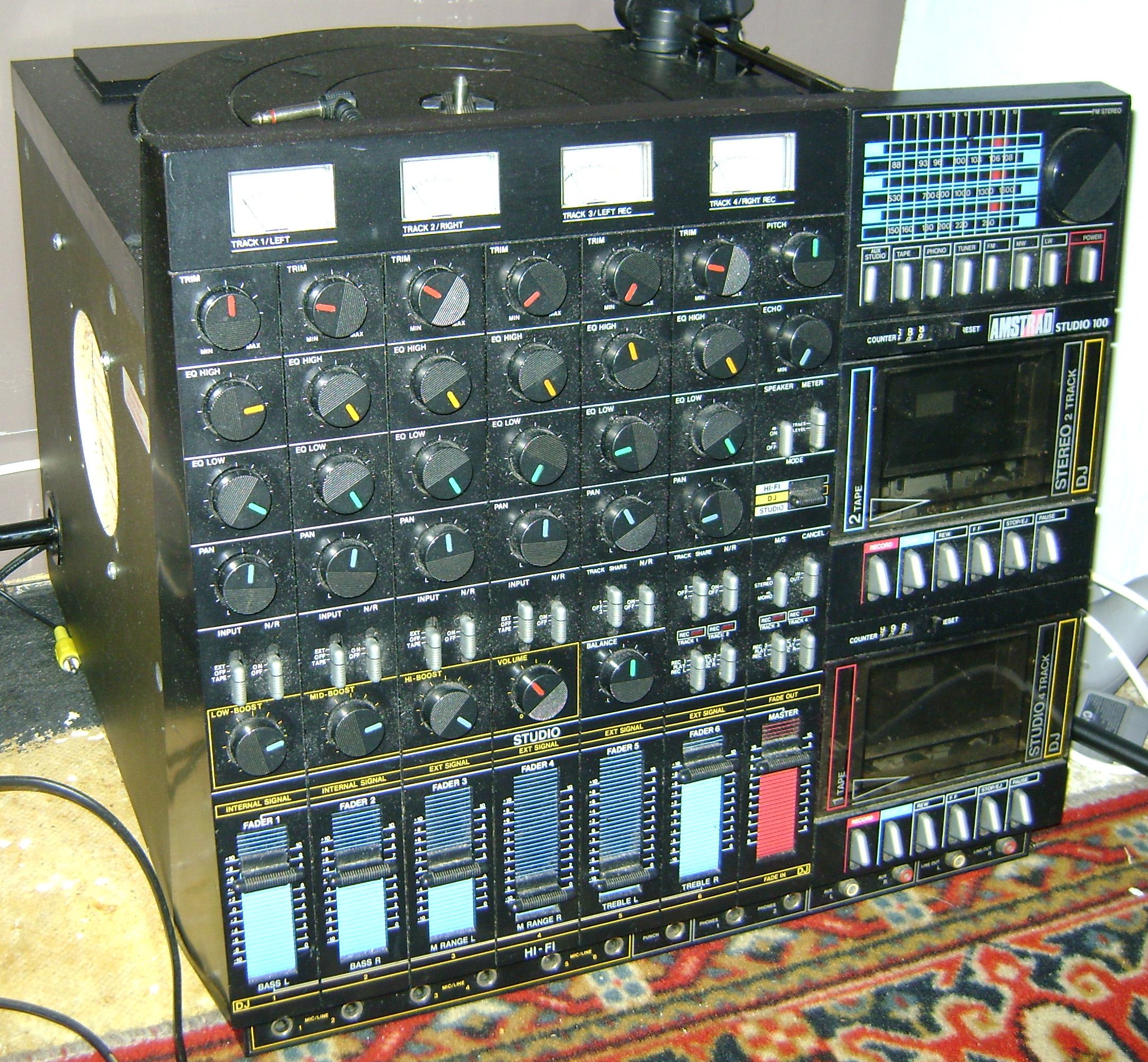|

ACCUEIL

HI-FI
JEUX
VIDEOS
MUSIQUE
VIDEO

PC
UTILITAIRE
PHOTO
VIDEO

AUTO
MOTO
MODELISME
EVASION

ENERGY
DRINK
SPIRITUEUX
ARME
BLANCHE

STARS
CALENDRIER

REFLEXION
DIVERS
ANNONCE
PRESSE

MES
BEBES

LIENS
CONTACT

|

AMSTRAD : Chaine HiFi

.AMSTRAD STUDIO 100
Cette chaine est pour moi un COLLECTOR
!!!
=> RECHERCHE : les 4
micros de couleur avec le casque... d'origine !
(occasion Ebay France)





AMSTRAD FIDELITY COMPUTERPHONIC
: Synthétiseur

Amstrad CKX100 ComputerPhonic
Clavier Midi avec mode d'emploi mais sans bloc
alimentation

This
keyboard is a historical oddity, because although it was released in
1988 (box copyright date), its sound and case style, box design and
especially the long and lovely demos resemble much more the early
digital sound estheticism from around 1984. The main voice is made from
very clean digital dual waveform timbres those imitate FM and resemble
very much the great Yamaha
MK-100 from
1983, and like the latter it has even a trio mode ("auto harmony")
for cheesy pop organ chords.
An
unusual special feature of this instrument is the "playright
mode", which switches the right keyboard section to pentatonic
tone scales, those vary with the actual chord (selected with the left
hand) to force the player to play what establishment considers
harmonious (a bit like an Omnichord).
The cheesy single finger accompaniments are quite over- orchestrated
and thus less versatile. The percussion is made from simple low
resolution samples and resembles much Bontempi
GT 759.
There is also a MIDI- out jack and a simple sequencer with data
storage on audio cassettes. The preset sound and rhythm selection is a
bit awkward, since you have to press buttons multiple times to step
through them, and the demos appear between the rhythms. Initially the
PCB stank badly of epoxy.
The Amstrad
Fidelity CKX100 seems to be extremely rare and likely was
only released in Spain (I bough mine from eBay), since the
manual, box and warranty card is in Spanish and I neither saw the CKX100 nor
any other Amstrad keyboards elsewhere yet. The
company Amstrad was known in 1980th for cheap and
often poor sounding stereo sets and the famous Amstrad CPC
464/ 664/ 6128 home computer series. In Germany their HiFi
and computer stuff was sold under the Schneider brand.
main
features:
- 49 midsize keys
- 2 built-in speakers (sound bright
and fairly bassless, stereo)
- main voice polyphony 8 notes (only
3 with accompaniment, 1 in trio mode)
- 10 semi- OBS preset sounds {elec
piano, synth 1, guitar, flute, bells | brass, synth 2, harpso,
organ, strings}
- 28 preset rhythms {r & b,
hi-tec, pop, swing 1, dixie, samba, march 1 | rock 1, disco, funk,
swing 2, hoedown, salsa, march 2 | rock 2, reggae 1, hip-hop,
bounce, country, bossa, waltz 1 | boogie, reggae 2, heavy metal,
ballad, barock, pop-cha, waltz 2} (selected in a sequence by 7
group + 1 select button)
- volume & separate rhythm accomp
volume slider
- vibrato & sustain button
- trio mode ("auto harmony"
button)
- single finger accompaniment (manual
chord mode with rhythm off)
- "playright" mode (switches
keyboard to pentatonic scales selected by the current single
finger chord)
- tempo +/- buttons (21 steps)
- rhythm fill-in button
- keyboard drum kit mode only during
demos {whistle, hand clap, dog, cowbell, bell} (each 3 pitches)
- many orange, green & yellow
LEDs
- main voice sound is based on 2
layered static digital waveforms with independent simple envelope;
with some low tones mild sample aliasing noise gets audible. The
sound is stereo; the 3rd keyboard octave is panned to the center,
lower notes only to the left channel and higher notes only to the
right. Percussion is made from thin sounding low resolution
samples.
- complex multi- chip hardware (crystal
clocked):
- CPU= "8J2, HD63B03XP, Japan"
(64 pin DIL)
- IC8 (sound IC)= "ST, M114S,
28832" (40 pin DIL)
- IC5 (RAM?)= "KM6264AL-10,
844, Korea" (28 pin DIL)
- IC4 (EPROM) ="VER. 2.22
4D37" (28 pin DIL)
- IC7 (EPROM) ="VER. 11.5
19R7" (28 pin DIL)
- IC9 "KIA7769P, 8L" (16
pin DIL)
- 8 KByte RAM, 48 KByte ROM
- simple sequencer (polyphonic
record/ playback with accompaniment, no edit)
- 7 long and complex orchestrated
demo melodies (those mute their main voice during manual play)
- jacks for AC- adapter, phones, line
out, tape data saving, MIDI out

Divers LIENS

http://weltenschule.de/TableHooters/Amstrad_CKX100.html
@+
|






